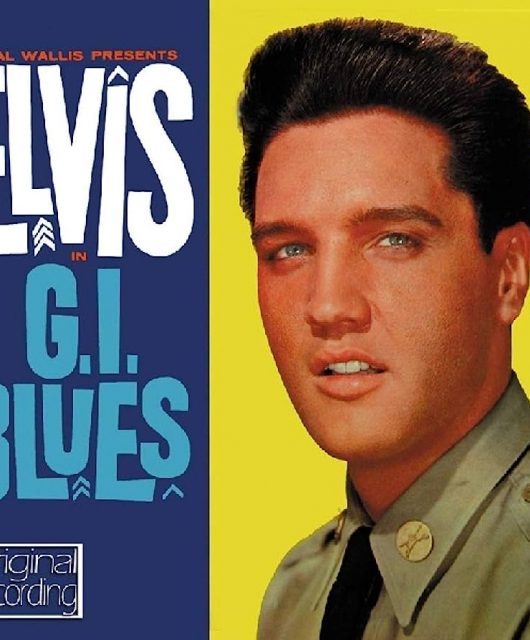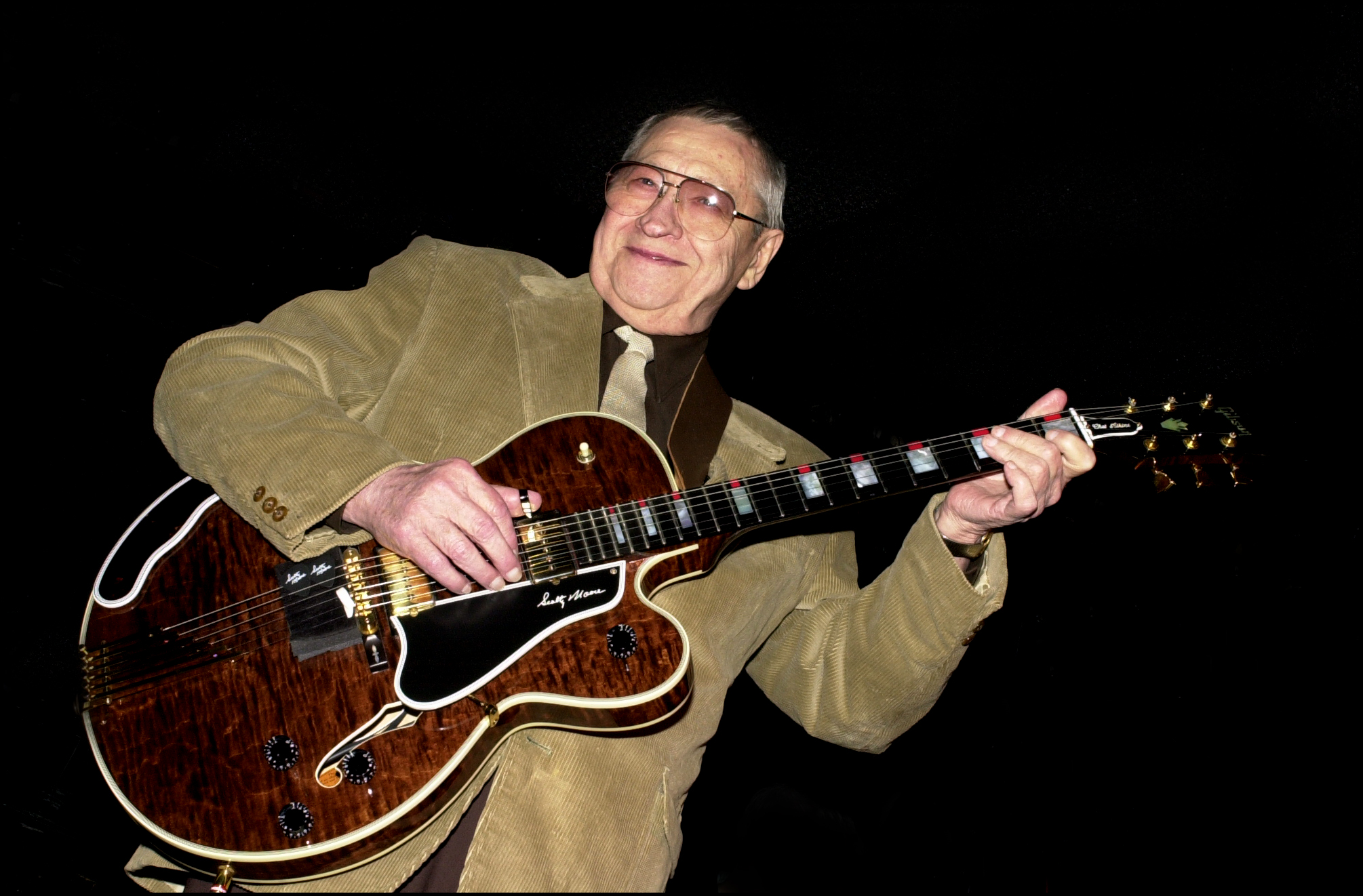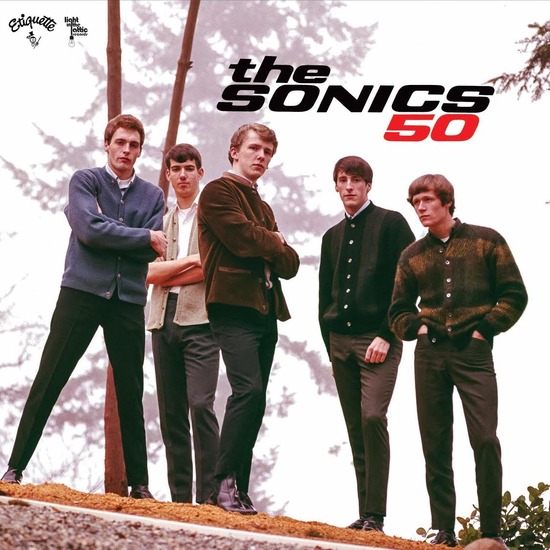The Ed Sullivan Show, which ran on US TV from 1948 to 1971, was the programme that introduced many of rock’n’roll’s biggest names to the American public. Vintage Rock remembers some of the iconic acts that performed at CBS’s hallowed Studio 50…
When Toast Of The Town premiered on 20 June 1948, few people watching would have had any inkling that this humble variety show would become one of the most popular television programmes in history. Yet over 1,068 episodes, CBS’s The Ed Sullivan Show – as it was retitled in 1955 – would introduce some of the most seismic names in music to the American public.
Over the course of its 23-year TV life, this Sunday night spectacular would play host to everyone from Buddy Holly and Elvis Presley, Bill Haley and Jerry Lee Lewis, Fats Domino and Ray Charles to The Beatles and The Rolling Stones. Anyone who was anyone in 50s and 60s rock and pop graced that stage at CBS Studio 50 on Broadway and 39th Street. Careers and legacies were launched on The Ed Sullivan Show, so much so that it’s rare for an issue of Vintage Rock to go to press without a reference to it somewhere.
Unlike the more country-accented Louisiana Hayride, The Ed Sullivan Show was open to all genres. Black artists, who generally found it hard to secure TV airtime in the 50s (many networks were fearful of upsetting white Southern sensibilities), were welcome on Sullivan’s stage. “The most important thing,” the host once said, “is that we’ve put on everything but bigotry.”
The Ed Sullivan Show archive is such a rich cultural treasure trove that in November 2022, its digital channels (which include YouTube, Apple Music and Facebook) surpassed one billion views. For a TV programme that ended more than half a century ago, that’s some achievement.
Watching the show now through 2023 eyes, it’s amazing how awkward and unpolished this titan of American broadcasting seems. Yet even at the beginning, critics were harsh with regard to Toast Of The Town’s often blundering host. One newspaper columnist, Harriet Van Horne, wrote that “[Sullivan] got where he is not by having a personality, but by having no personality.” (The host wrote back to the critic, “Dear Miss Van Horne: You bitch. Sincerely, Ed Sullivan.”)
Time magazine, meanwhile, were even more brutal, writing that the presenter resembled “a cigar-store Indian, the Cardiff Giant and a stone-faced monument just off the boat from Easter Island. He moves like a sleepwalker; his smile is that of a man sucking a lemon; his speech is frequently lost in a thicket of syntax; his eyes pop from their sockets or sink so deep in their bags that they seem to be peering up at the camera from the bottom of twin wells.”
Yet audiences loved him. Though the programme was titled Toast Of The Town, the public simply referred to it as The Ed Sullivan Show, a nickname that stuck so much it was officially renamed that in 1955. Over the course of its life, it never really changed its format. Templated like an old-time vaudeville show, an average episode might include a couple of stand-ups, jugglers or magicians, acrobats, a puppet act for the kids (a little mouse character named Topo Gigio was a regular), an easy listening crooner and – from the mid-50s at least – some jukebox favourite for the teens.
And it’s these music acts that have proved the lasting legacy of The Ed Sullivan Show. According to the official Ed Sullivan website, it’s not Topo Gigio, Rodney Dangerfield or Stiller & Meara who command the most amount of online streams, it’s Elvis Presley performing Hound Dog (53.8 million) and Don’t Be Cruel (47.6 million), and Ike & Tina Turner belting out Proud Mary (47.5 million). His show launched so many careers that one journalist recently posed the question, “Why isn’t Ed Sullivan in the Rock And Roll Hall of Fame?”
One of the first rock’n’roll acts to appear on The Ed Sullivan Show was Bill Haley who, along with his Comets, performed a juiced-up version of Rock Around The Clock in August 1955. It wasn’t long after, however, that the programme booked its first Black rock’n’roller in Bo Diddley – though his appearance would prove, for this artist at least, a one-off.
It was on 20 November 1955 that the guitarist, who’d only released his first disc, Bo Diddley/I’m A Man, earlier that year, was booked to appear. According to reports, Diddley had agreed to sing the Tennessee Ernie Ford standard Sixteen Tons on the show, only to change his mind shortly before he was due on camera. His decision to perform the longer Diddley Daddy instead meant a panicked rearranging of the show, with producers forced to cut the two acts preceding the singer.
In his autobiography, Living Legend, Diddley alleged that Sullivan barked at him: “You are the first Black boy that ever double crossed me! I’ll see that you never work no more in showbusiness. You’ll never get another TV show in your life!”
Though the programme had been generally encouraging of rock’n’roll, Sullivan himself was initially unenthusiastic about booking Elvis Presley, simply stating, “He is not my cup of tea.” But after Presley’s appearance on Steve Allen’s NBC show had trounced Sullivan in the ratings, the host relented. Except, when Elvis did eventually appear on 9 September 1956, it wasn’t Sullivan who would introduce him.
A few weeks earlier the presenter had been involved in a near-fatal car accident and was still recuperating at the time Presley’s episode aired (Elvis sent him a get well card and photo, autographed to ‘Mr Ed Sullivan’). Instead, Charles Laughton, the rotund British star of Mutiny On The Bounty, was booked to host the show, much to Elvis’ delight. Anticipation was so high for Presley’s appearance that rival network NBC decided not to air Allen’s show that night, opting for a movie instead.
Elvis played two sets on that inaugural appearance – Don’t Be Cruel and Love Me Tender then Ready Teddy as well as a truncated version of Hound Dog. Presley’s performance was viewed by over 60 million people that evening which represented a staggering 82.6% share of the available television audience.
Elvis’ booking had proved such a ratings smash that a second appearance was a given. He returned just seven weeks later on 28 October ’56, playing a largely similar set, starting with Don’t Be Cruel and Love Me Tender before launching into Love Me and Hound Dog (this time a four-minute version). In his intro, Sullivan commended the teenagers in the audience on their composure and asked them not to scream during the performance. As a sign of how respected Sullivan was, the assembled crowd dutifully complied.
Elvis’ third and final turn for Sullivan occurred on 6 January 1957, where he performed a medley of Hound Dog, Love Me Tender and Heartbreak Hotel, followed by a full version of Don’t Be Cruel, and – for his second set – Too Much and When My Blue Moon Turns To Gold Again before returning for a closing rendition of Peace In The Valley.
Introducing Presley, Sullivan went out of his way to lavish praise on the rock’n’roller (“Oh, I wish I was young
again, it’s wonderful to be that way!”), while acknowledging this would be the singer’s last time on the show – for now, at least.
After the King’s performance of Peace In The Valley, Sullivan walked up and put his arm around Presley’s shoulder. “Elvis, ladies and gentlemen,” the host said, “this will be the last time that we’ll run into each other for a while. But I want to say to Elvis Presley and the country that this is a real decent, fine boy, and whenever you go, Elvis, we want to say that we’ve never had a pleasanter experience on our show with a big name than we’ve had with you. So now let’s have a tremendous hand for a very nice person!”
If everything seemed congenial to the viewers at home, it didn’t look that way to Presley who complained during an interview in 1969 about the camera crew only shooting him from the waist up.
Another of the rock’n’roll greats, Buddy Holly And The Crickets, would make two appearances on The Ed Sullivan Show, starting on 1 December 1957, fresh off the release of their debut album. Looking pleasingly smart in bow ties and sports coats, the band essayed two songs, That’ll Be The Day and Peggy Sue. The subsequent success of the latter (it would peak at No.3 on the Billboard chart) led to a second booking just two months later.
The Crickets were down to perform two songs, though Sullivan wasn’t keen on them doing Oh, Boy! and asked them
to replace it with a less raucous number. Holly, however, was adamant. Having turned up to rehearsal on his own, Sullivan asked him where the other Crickets were. “I don’t know. No telling,” Holly shrugged. “I guess The Crickets are not too excited to be on The Ed Sullivan Show?” the host said. “I hope they’re damn more excited than I am,” replied Holly.
An enraged Sullivan cut the Crickets’ act from two songs to one and, intentionally or not, mispronounced Holly’s surname in his introduction. The band played Oh, Boy! but the line feed for Holly’s electric guitar had been turned off, at whose insistence we can only guess. When the show asked Buddy and the Crickets back for a third time, Holly simply told them they couldn’t afford him.
While The Ed Sullivan Show gave a mostly inclusive, if sometimes disgruntled, platform to that first generation of rock’n’rollers, it also helped usher in the second generation. The British Invasion, as it was, likely wouldn’t have happened had CBS’s premier variety show not been so welcoming.
If Sullivan thought he’d won big with Elvis’ first appearance, it was nothing next to The Beatles’ debut on 9 February 1964. A record-breaking 73 million Americans tuned in to see John, Paul, George and Ringo blast through All My Loving, Till There Was You and She Loves You, to ear-splitting screams from the audience (the show had received 50,000 ticket requests for the 728-seat studio).
During the second song, the show flashed up name captions for each Beatle as he appeared, with John’s name getting an extra ‘Sorry girls, he’s married’ line below it. The Fabs returned later in the show, after Sullivan jokingly admonished the audience for shrieking (“If you don’t keep quiet, I’m going to send for a barber”), for an encore of I Saw Her Standing There and I Want to Hold Your Hand.
The Beatles were lined up for the next two episodes of The Ed Sullivan Show and again on 24 May ’64 (though this fourth appearance would be a taped interview and a pre-recorded version of You Can’t Do That). Their final performance was recorded on 14 August 1965 and broadcast 12 September, with a setlist of I Feel Fine, I’m Down, Act Naturally, Ticket To Ride, Yesterday and Help!.
Though they never performed at Studio 50 again, they did lens a series of promo clips to air exclusively on the show, including videos for Paperback Writer, Rain, Penny Lane, Strawberry Fields Forever and Hello, Goodbye.
The Beatles’ appearances on The Ed Sullivan Show remain some of the most viewed music performances in television history. In terms of percentage of America’s population, those first two shows from February ’64 remain the highest-viewed regularly scheduled TV programmes of all time.
The Fab Four were just one of many British beat bands to guest on Sullivan’s stage in the 60s. On 8 March ’64, The Dave Clark Five sang Glad All Over on the show. This song was the first of 15 consecutive US Top 40 singles for the group, who had developed a fanatical following across the pond. The DC5 would end up appearing a total of 12 times on the show, with Sullivan at one point telling the audience, “Look, kids, we’ve got The Dave Clark Five on tonight. Now I don’t mind if you carry on when they come out, but remember there are other acts on the bill!”
Of course, with The Beatles having appeared, it was inevitable The Rolling Stones would follow suit and Mick Jagger and co made their first appearance on 25 October ’64. However, Sullivan was no fan of the band and of the near-hysterical reaction they brought out in his audience (at one point the group’s fans shrieked through his interview with Jagger and through the introduction of his next guest).
“I promise you they’ll never be back on our show,” Sullivan said. “It took me 17 years to build this show and I’m not going to have it destroyed in a matter of weeks.” When Stones manager Andrew Loog Oldham tried to change the host’s mind, he received an unsparing response: “We were deluged with mail protesting the untidy appearance – clothes and hair of your Rolling Stones. Before even discussing the possibility of a contract, I would like to learn from you, whether your young men have reformed in the matter of dress and shampoo.”
Sullivan eventually relented (though with no sign that the Stones had re-evaluated their relationship with Head & Shoulders) and the bad boys of rock’n’roll would return for a number of performances on the show through the 1960s, though it’s their second to last appearance on 15 January 1967 that has gone down in infamy. Scheduled to perform the song Let’s Spend The Night Together, a jittery CBS demanded that Jagger change the lyric to “Let’s spend some time together.” After the band baulked, Sullivan issued them an ultimatum: “Either the song goes, or you go.”
When the band played the song live, Jagger dutifully sang the altered line, but with an exasperated roll of the eyes, a subtle act of rebellion, admittedly, but one that still annoyed CBS as the next week, when they replayed the Stones’ performance of Ruby Tuesday from that 15 January episode, but pointedly not Let’s Spend The Night Together.
As The Ed Sullivan Show entered the late 60s, it continued to shine a light on all types of music, from the sun-dappled pop of The Mamas And The Papas and dark, acid-fuelled rock of The Doors to the proto-disco fizz of The Jackson Five.
However, its days were numbered. Dwindling audience figures and a haemorrhaging of advertising revenue caused CBS to pull the plug and the final episode aired on 28 March 1971.
The Ed Sullivan Show lasted 23 years, yet the America it reflected at the time of its demise was almost unrecognisable from the one at its inception. Which is why its archives are among the most culturally valuable in US television. Through its clips we can see the country – and indeed the world – changing in front of our eyes.
No other TV programme in history can boast the rich rock’n’roll archive of The Ed Sullivan Show, because, at a time when most mainstream media were running scared of this voltaic new artform, he embraced it and gave it the largest of platforms. For that alone, he’s an honorary member of the Vintage Rock Rock And Roll Hall Of Fame.






